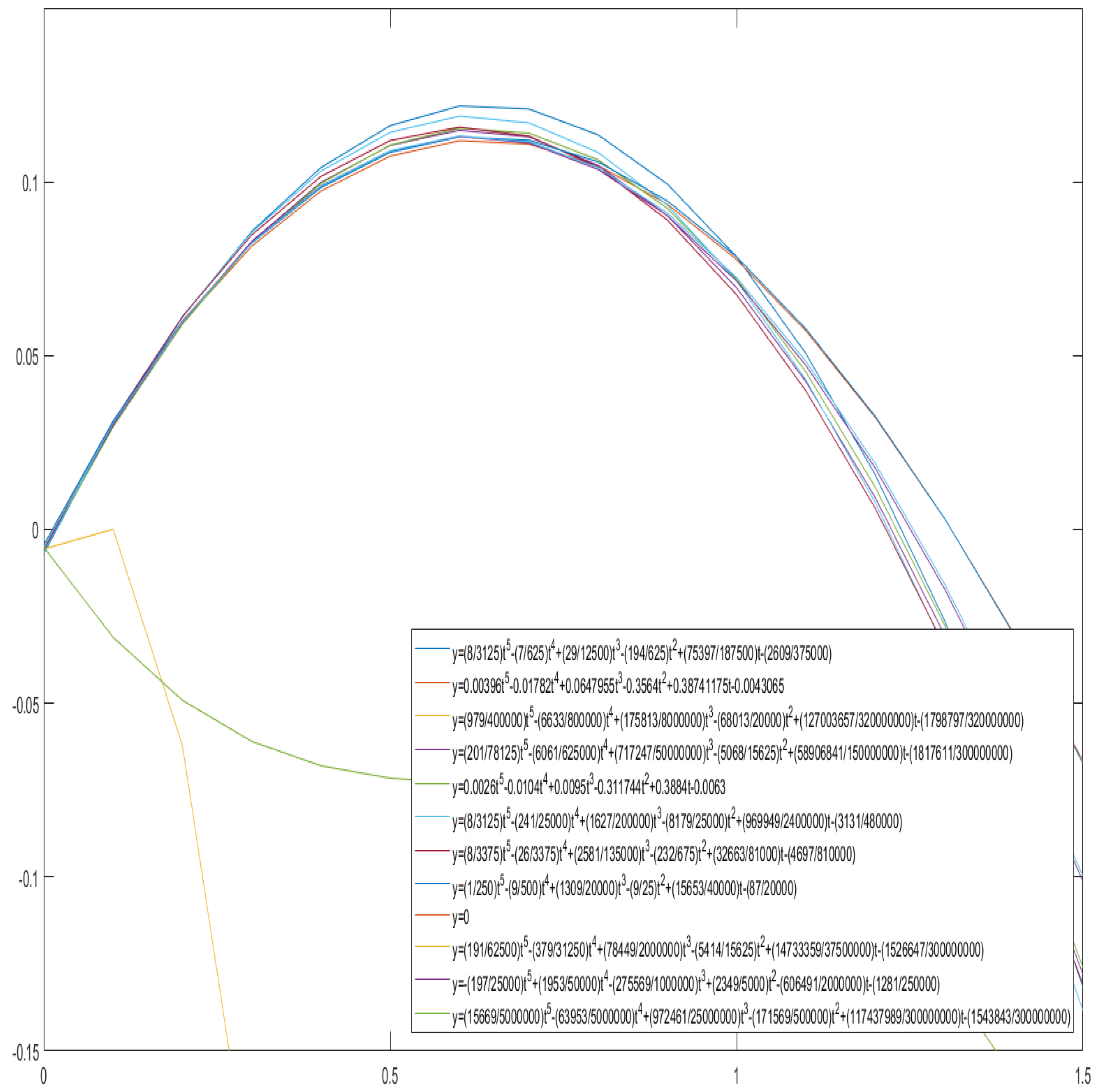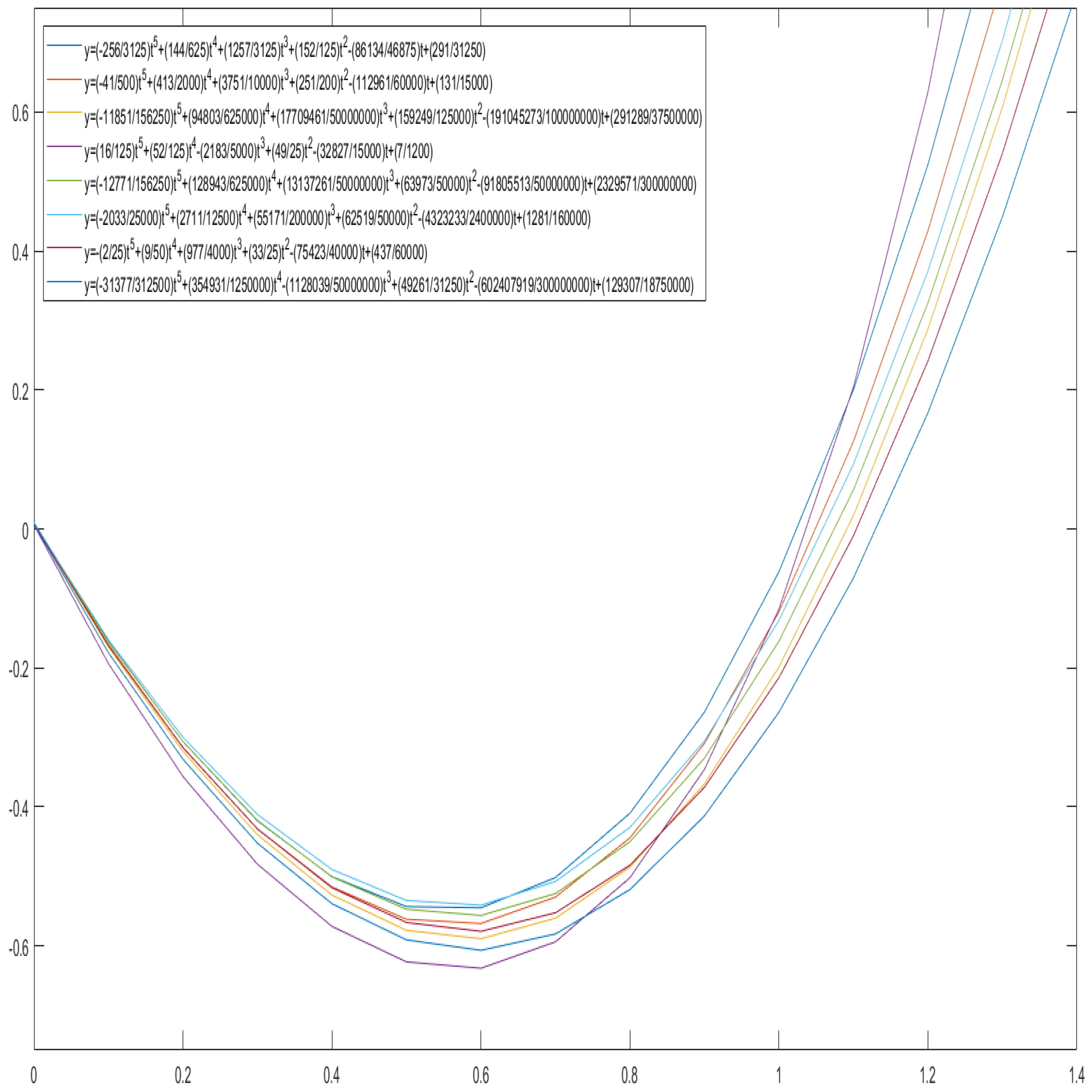The Inequalities of Merris and Foregger for Permanents
Abstract
:1. Introduction
2. Merris Conjecture
- We need to find Let the maximum sum be attained in the kth column, i.e., , where . Let the entries of the kth column be . This implies that for each and hence for each . Taking the permanent along the kth column, . Multiplying by n on both sides, . Since for each and since each of the subpermanents is non-negative, this implies that . This implies that .
- From the inequality 1, .
- From the proof of the inequality 1, for each . Taking summation over running from 1 to n, . .
3. Foregger’s Inequality
| s | |
| 0 | |
| r | |
4. Conclusions
Author Contributions
Funding
Institutional Review Board Statement
Informed Consent Statement
Data Availability Statement
Acknowledgments
Conflicts of Interest
Appendix A


References
- Minc, H. Permanents. Encycl. Math. Its Appl. 1978, 6, 158. [Google Scholar]
- Lieb, E.H. Proofs of some conjectures on permanents. In Inequalities; Springer: Berlin/Heidelberg, Germany, 2002; pp. 101–108. [Google Scholar]
- Hwang, S.G. A note on a conjecture on permanents. Linear Algebra Its Appl. 1986, 76, 31–44. [Google Scholar] [CrossRef] [Green Version]
- Lih, K.W.; Wang, E.T. Monotonicity conjecture on permanents of doubly stochastic matrices. Proc. Am. Math. Soc. 1981, 82, 173–178. [Google Scholar] [CrossRef]
- Cheon, G.S.; Wanless, I.M. An update on Minc’s survey of open problems involving permanents. Linear Algebra Its Appl. 2005, 403, 314–342. [Google Scholar] [CrossRef] [Green Version]
- Zhang, F. An update on a few permanent conjectures. Spec. Matrices 2016, 4, 305–316. [Google Scholar] [CrossRef] [Green Version]
- Merris, R. The permanent of a doubly stochastic matrix. Am. Math. Mon. 1973, 80, 791–793. [Google Scholar] [CrossRef]
- Subramanian, P.; Somasundaram, K. Some conjectures on permanents of doubly stochastic matrices. J. Discret. Math. Sci. Cryptogr. 2016, 19, 997–1011. [Google Scholar] [CrossRef]
- Foregger, T.H. Remarks on a Conjecture of M. Marcus and H. Minc. Linear Multilinear Algebra 1979, 7, 123–126. [Google Scholar] [CrossRef]
- Foregger, T.H. Permanents of convex combinations of doubly stochastic matrices. Linear Multilinear Algebra 1988, 23, 79–90. [Google Scholar] [CrossRef]
- Holens, F. Two Aspects of Doubly Stochastic Matrices: Permutation Matrices and the Minimum Permanent Function. Ph.D. Thesis, University of Manitoba, Winnipeg, MB, Canada, 1964. [Google Scholar]
- Djokovic, D.Z. On a conjecture by van der Waerden. Mat. Vesnik 1967, 19, 566–569. [Google Scholar]
- Hwang, S.G. The monotonicity of and the Đoković conjectures on permanents of doubly stochastic matrices. Linear Algebra Its Appl. 1986, 79, 127–151. [Google Scholar] [CrossRef] [Green Version]
- Wanless, I.M. The Holen-Dokovic conjecture on permanents fails. Linear Algebra Its Appl. 1999, 286, 273–285. [Google Scholar] [CrossRef] [Green Version]
- Seneta, E. Non-Negative Matrices and Markov Chains; Springer: New York, NY, USA, 1981. [Google Scholar]
- Lih, K.W.; Wang, E.T. A convexity inequality on the permanent of doubly stochastic matrices. Congr. Numer. 1982, 36, 189–198. [Google Scholar]
- Marcus, M.; Minc, H. On a conjecture of B. L. Van der Waerden. Math. Proc. Camb. Philos. Soc. 1967, 63, 305–309. [Google Scholar] [CrossRef]
- Wang, E.T. On a conjecture of M. Marcus and H. Minc. Linear Multilinear Algebra 1977, 5, 145–148. [Google Scholar] [CrossRef]
- Eberlein, P.J. Remarks on the van der Waerden conjecture II. Linear Algebra Its Appl. 1969, 2, 311–320. [Google Scholar] [CrossRef] [Green Version]
- Eberlein, P.J.; Mudholkar, G.S. Some remarks on the van der Waerden conjecture. J. Comb. Theory 1968, 5, 386–396. [Google Scholar] [CrossRef] [Green Version]
- Kopotun, K.A. On some permanental conjectures. Linear Multilinear Algebra 1994, 36, 205–216. [Google Scholar] [CrossRef]
Publisher’s Note: MDPI stays neutral with regard to jurisdictional claims in published maps and institutional affiliations. |
© 2021 by the authors. Licensee MDPI, Basel, Switzerland. This article is an open access article distributed under the terms and conditions of the Creative Commons Attribution (CC BY) license (https://creativecommons.org/licenses/by/4.0/).
Share and Cite
Udayan, D.K.; Somasundaram, K. The Inequalities of Merris and Foregger for Permanents. Symmetry 2021, 13, 1782. https://doi.org/10.3390/sym13101782
Udayan DK, Somasundaram K. The Inequalities of Merris and Foregger for Permanents. Symmetry. 2021; 13(10):1782. https://doi.org/10.3390/sym13101782
Chicago/Turabian StyleUdayan, Divya K., and Kanagasabapathi Somasundaram. 2021. "The Inequalities of Merris and Foregger for Permanents" Symmetry 13, no. 10: 1782. https://doi.org/10.3390/sym13101782





